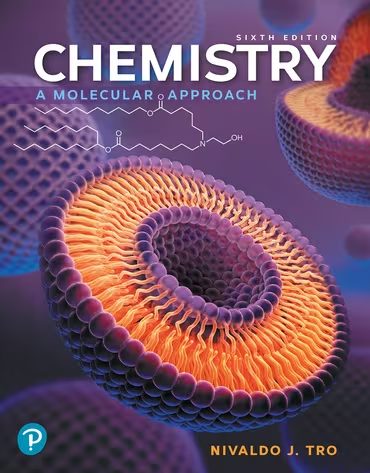Here are the essential concepts you must grasp in order to answer the question correctly.
Gibbs Free Energy (ΔG)
Gibbs Free Energy (ΔG) is a thermodynamic potential that measures the maximum reversible work obtainable from a thermodynamic system at constant temperature and pressure. It is a crucial concept in predicting the spontaneity of a reaction; a negative ΔG indicates a spontaneous process, while a positive ΔG suggests non-spontaneity. The relationship between ΔG and the equilibrium constant (K) is given by the equation ΔG = -RT ln(K), where R is the universal gas constant and T is the temperature in Kelvin.
Recommended video:
Gibbs Free Energy of Reactions
Equilibrium Constant (Kp)
The equilibrium constant (Kp) is a dimensionless number that expresses the ratio of the concentrations of products to reactants at equilibrium for a given reaction at a specific temperature. For the reaction I2(g) + Cl2(g) ⇌ 2 ICl(g), Kp = 81.9 indicates that at equilibrium, the concentration of ICl is significantly higher than that of I2 and Cl2, suggesting that the formation of ICl is favored under standard conditions. This constant is essential for calculating ΔG under different conditions.
Recommended video:
Equilibrium Constant Expressions
Standard Conditions
Standard conditions refer to a set of specific parameters used to measure and compare thermodynamic properties, typically defined as 1 bar of pressure and a specified temperature, usually 25 °C (298 K). Under these conditions, the standard Gibbs free energy change (ΔG°) can be calculated using the equilibrium constant (Kp) and is essential for determining the spontaneity of reactions. Understanding standard conditions is vital for accurately calculating ΔG for reactions in a consistent manner.
Recommended video:
Standard Reduction Potentials

 Verified step by step guidance
Verified step by step guidance


